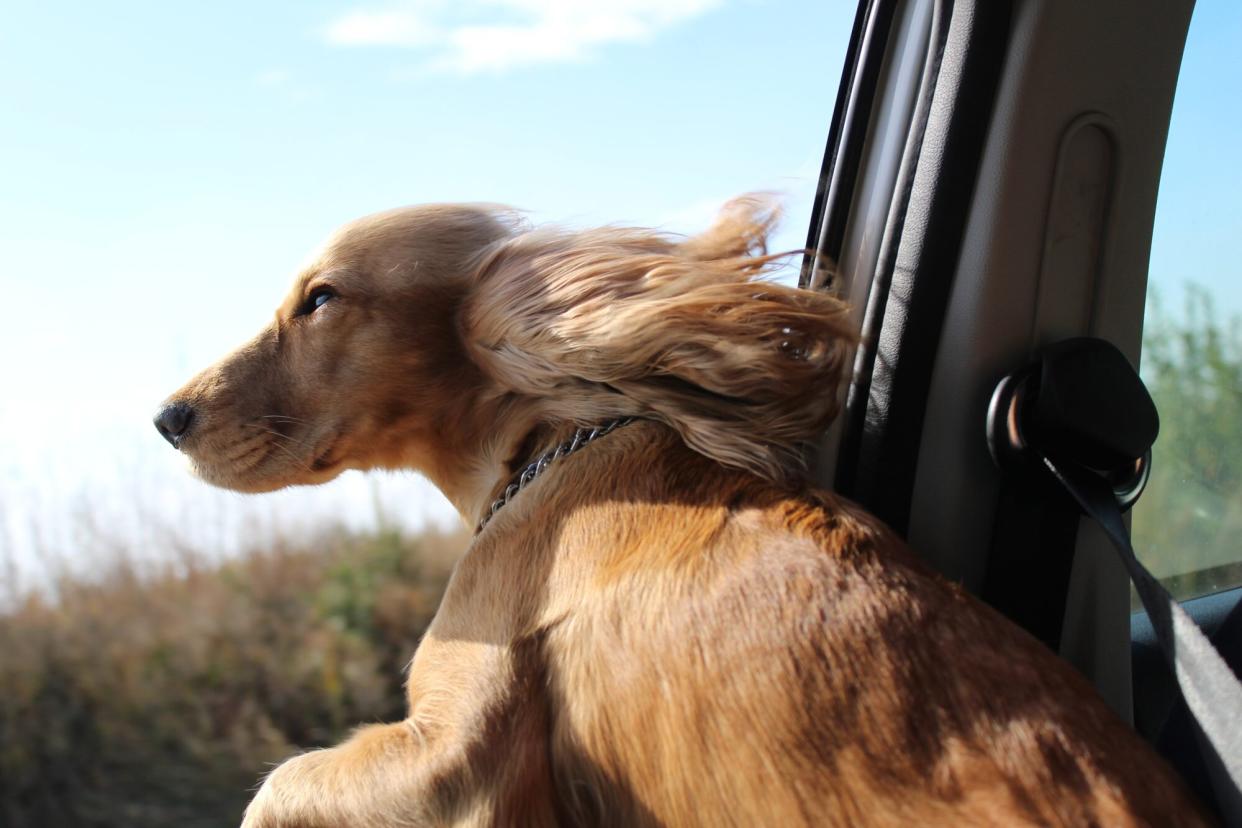Taking a Road Trip with Your Dog? Follow These Five Tips

Zmaj88 / Getty Images
Taking a road trip across the United States is more popular than ever—once you consider the lingering pandemic and the inconvenience and hazards of flying, that fact becomes less surprising. Another reason why hitting the open road is so popular right now? It makes bringing your pet along for the ride simple. There's certainly less to worry about when traveling by car, but it's not quite as simple as putting your puppy in the back seat and getting a move on. Before you take off, consider these expert tips for a safe and comfortable road trip with your dog.
Get your dog used to the car.
If your dog doesn't routinely ride in the car, don't jump right into a days-long expedition. Instead, the ASPCA recommends taking a series of short drives first, gradually increasing the amount of time while monitoring for any problems. If your dog seems especially stressed, reconsider your plans—leaving him home with a qualified sitter might make for a more relaxing vacation for everyone involved.
Invest in a crate.
Letting your dog have free range of the car presents two problems: In the event of an accident or an abrupt stop, he could be injured. He could also cause an accident if he becomes scared, excited, or otherwise interested in sitting on your lap. "Just like you wouldn't simply toss your child in the back seat, you shouldn't let your pets roam free in the car," says Dr. Carly Fox, a staff veterinarian at New York City's Animal Medical Center Emergency and Critical Care Service. "It's dangerous for them, and it's dangerous for you." Ideally, Fox recommends keeping your dog in a secured crate or carrier. The crate should be well-ventilated, and large enough that your pet can sit, stand, turn around, and lie down inside of it. If your car isn't large enough to accommodate a crate, use a pet harness specially designed to attach to seat belts. Regardless of where your dog is riding during the road trip, never let him stick his head out the window. As cute as a dog enjoying a little fresh air looks, he's at risk of being injured by passing objects or falling out of the vehicle.
Don't leave your dog unattended.
Every summer, dogs die when left alone in hot cars. Many times, well-meaning owners don't realize how hot a car can become on a reasonably cool day. "The inside of a car is much, much hotter than it is outside," says Fox. "I've seen dogs die when it was 70 degrees outside—it's never, even for a few minutes, OK to leave your dog in the car." According to the American Veterinary Association, a 70-degree day can translate to a 113-degree car in an hour. On an 85-degree day, your car will be over 100 degrees in less than 10 minutes—and studies show that cracking the windows makes little difference. If you see a dog trapped in a hot car this summer, the Humane Society of the United States recommends taking down the car's make, model, and license plate number, then asking managers at nearby businesses to make announcements alerting the pet owner. If the owner can't be found, call the police and wait by the car until they arrive. It also helps to know the local law—in some states, it's legal for a concerned citizen to remove an animal from a car.
Pack the essentials and update your dog's ID.
Canines tend to travel light, but you should plan to bring a few essentials for the road trip with your dog. In addition to the obvious (food, water, bowls, a leash) remember bedding for the crate, a favorite toy for comfort, and medications. You'll also want to have vet records with vaccine documentation—not only will these come in handy should an emergency arise, but some states require health records for animals transported across state lines. Before you leave, be sure to check your dog's ID tag. Is the address and phone number up to date? Is his microchip registered? Should your dog become lost in unfamiliar territory, it's especially important to have clear, current identification.
Check for ticks.
If you stop at a park or plan to camp, be mindful of ticks, especially in the summer. According to a report from the Centers for Disease Control and Prevention, tick-borne illnesses are on the rise after a series of warmer winters that have allowed the pests to move farther north. "If you're in a wooded area, you can basically assume that your dog will be in contact with ticks," says Fox. In addition to a monthly flea-and-tick preventative, consider adding a repellent collar for extra protection. As always, check your dog's fur for ticks after any possible exposure, paying special attention to easy-to-miss hiding places: inside the ears, under the collar, between toes, under the tail, and near the eyelids.

